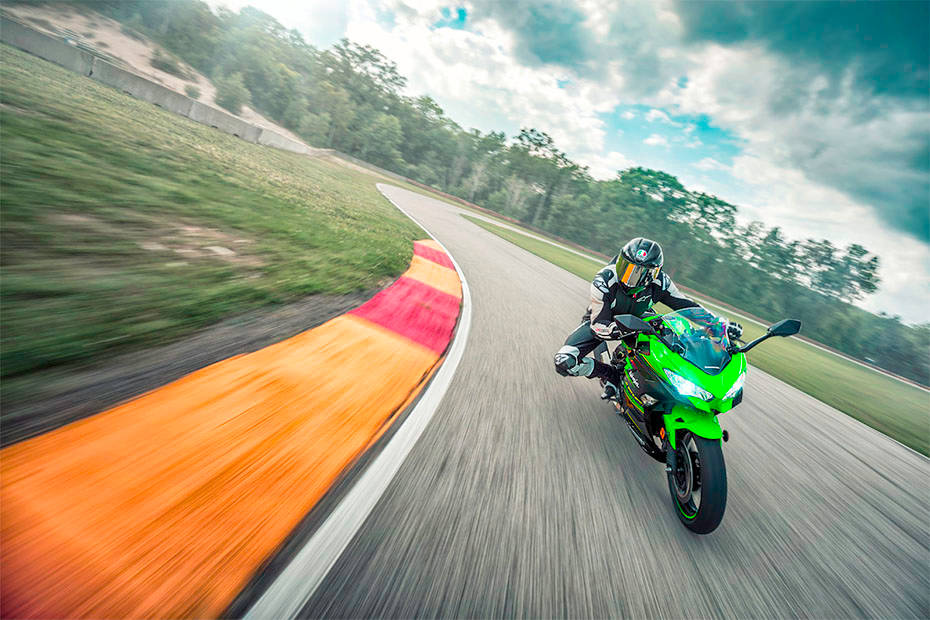Kawasaki Ninja 400 - Facts You Need To Know
Modified On Mar 20, 2019 01:28 PM By Deepak Luhadiyafor Kawasaki Ninja 400
- 19042 Views

At first, we all thought that the new Ninja 400 would replace the popular Kawasaki Ninja 300, but Kawasaki had different plans. The Ninja 400 is now smartly positioned between the Ninja 300 and the Ninja 650.
Here, we present some quick facts you need to know about the new Ninja 400 - the latest from the Kawasaki stable.
Bigger than the Ninja 300?
Not really. In fact, the Ninja 400 is shorter and narrower by 50mm and 5mm respectively than the Ninja 300. In terms of length, it is, however, 5mm longer than the 300. This is due to the Ninja H2- and Ninja ZX-10R-inspired body panels that make the bike look larger than it originally is - exceptional design work by Kawasaki.

Is it the all-new machine?
Except for the tyres (front - 110/70 R17 and rear - 150/60 R17) that have been borrowed from the Ninja 300, and a few bits from the Ninja 650, like the instrument cluster, everything is new. The Ninja 400 is built on an entirely new platform. It houses a new motor, sports new bodywork, new frame and the list continues.
What about the performance?
The Ninja 400 boasts a new 399cc liquid-cooled, parallel-twin motor with power and torque outputs rated at 49PS at 10,000rpm and 38Nm at 8,000rpm respectively. As it should be, the Ninja 400 produces 10PS more power and 11Nm more torque than the Ninja 300. The motor is tuned to perform better in the low to mid-range and deliver linear power throughout. At lower RPM, power and torque produced are more than usual. Thanks to its new intake system, exhaust, lightweight internals and revised bore and stroke that increase the compression ratio and eventually the power and torque.
Discussing Dynamics
The bike’s trellis frame is similar to that of the Ninja H2. It is light in weight, offers substantial rigidity and treats the motor as a stressed member. As compared to the Ninja 300, the swingarm is 10mm longer while the wheelbase is shorter by 35mm. The rake gets sharper, at 24.7 degrees. Everything collectively contributes to improved agility and flickability of the bike. The unsprung mass is reduced due to the presence of new lighter wheels on the Ninja 400. The suspension duties on the bike are handled by beefier 41mm telescopic front forks and a gas-charged monoshock rear suspension unit. Instead of IRC tyres, the new Ninja 400 gets Dunlops that are stickier and offer more grip.
What’s the price?
While being positioned right in the middle of the Ninja 300 (Rs 3.6 lakh) and the Ninja 650 (Rs 5.49 lakh), the Ninja 400 is priced at Rs 4.69 lakh. However, it seems pricey when we compare it to the more powerful and larger Kawasaki Z650 (priced at Rs 4.99 lakh).
The Kawasaki Ninja 400 rivals the Benelli 302R (Rs 3.69 lakh), the Yamaha R3 (Rs 3.48 lakh) and the KTM RC 390 (Rs 2.36 lakh, all prices ex-showroom Delhi).
